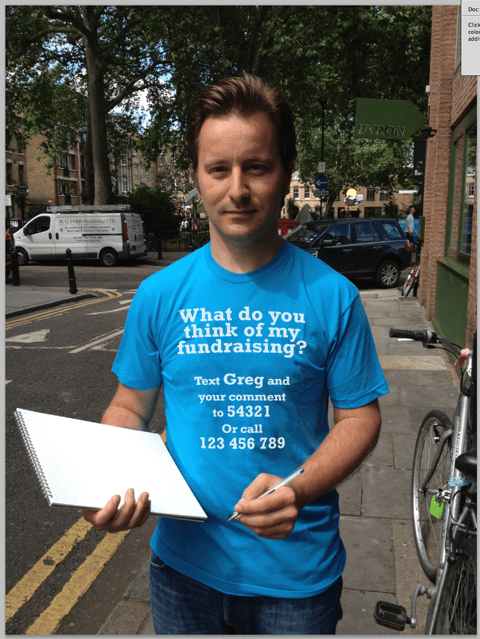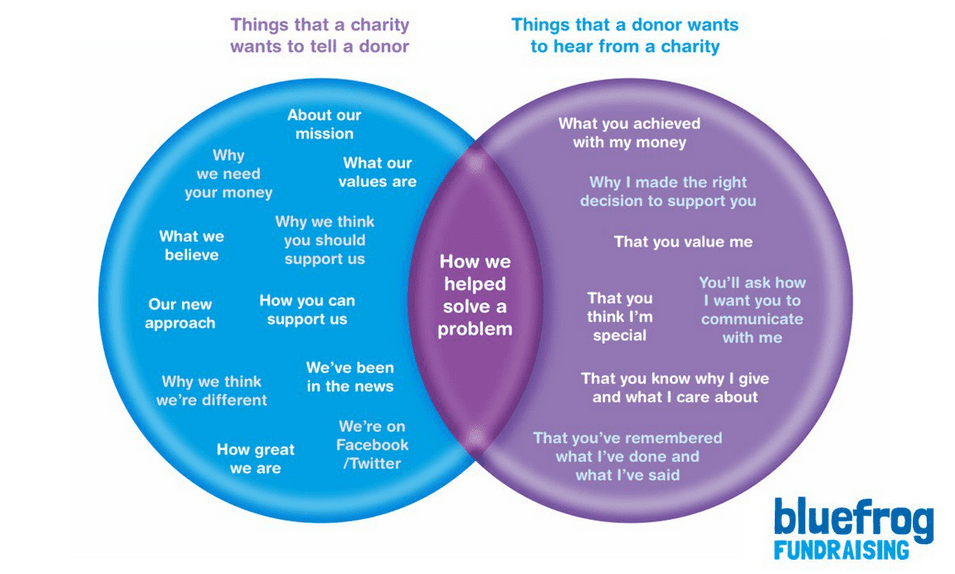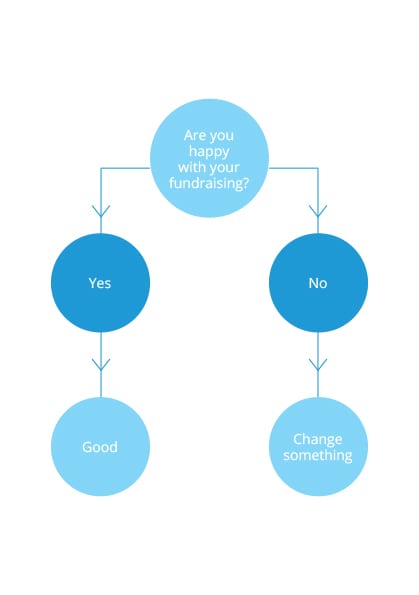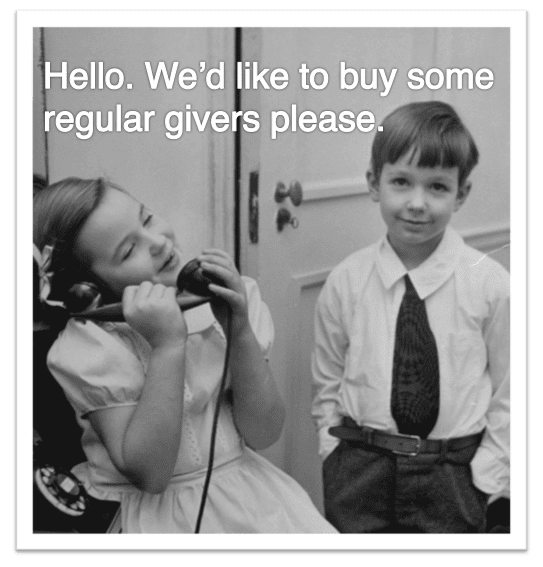What do we do about face to face fundraising?
Face to face fundraising has been through the mill over the last few weeks.
Following on from the revelations in the Sunday Telegraph, the IOF has called the fundraising directors from member charities that use the technique to a summit meeting.
Peter Lewis, Chief Executive of the IOF explained that it would be an opportunity to "review the public's experience of face-to-face fundraising, its financial importance to the sector and whether there are steps that we should be taking as the sector, or the institute, to ensure high standards are complied with and the public's trust and confidence is maintained."
Interestingly, the PFRA weren't on the list of invitees. I can see the argument for including them, but I'm in agreement with the IOF that they should be excluded for the time being.
The PFRA has always been in a difficult position. As well as policing face to face fundraising, they also have to champion and defend it.
And that's the problem.
The PFRA have always responded vigorously to any criticism of the technique, pointing out how much money it raises and highlighting research that shows people who have been signed up by face to face recruiters actually enjoy the experience.
I can't argue with either point but what about the people who aren't signed up?
Search on Google and you can find evidence going back almost a decade that shows that recruiting donors on the street really annoys a significant number of people.
One study in 2008, for example, found that "the presence of 'charity muggers' in the street put off almost 56% of respondents from making donations."
Amber Nathan, Bluefrog's researcher, undertakes hundreds of in-depth discussions with donors each year about their thoughts and feelings towards charities and she's found that the 'chugger rant' is becoming increasingly common amongst even the most deep thinking and well-intentioned donors…
"It turns out that the supporters who can discuss the pros and cons of charity advertising or the requirement for charities to pay their staff, are no less likely to have a chugger rant than a caricature of 'Dorothy Donor' who claims to believe that charities should be run by volunteers, or that charities on TV must be getting this advertising for free.
Very often I ask supporter interviewees to talk about the communications that they receive from charities, to explore which parts they’re the most engaged with, and so on. They’ll tell me about (for example) the excellent medical reports they get from Charity X, and how the appeals are a bit annoying, but they don’t mind them because they understand that charities have to ask, and so on. Then I’ll ask them to tell me about what Charity X could do better and what communication pieces they have least enjoyed.
I’d estimate that more than a third of the time, no matter the type of interviewee, you’d think they’d heard an entirely different question, by way of…
'I’ll tell you what bothers me the most, it’s when they come up to you in the street.'
[Me] 'Uhm, <Charity X> approached you in the street?'
'No, I just mean that I hate that. Charities shouldn’t do that.'
It’s as if being asked to cite something negative about charities instigates an automated we-all-hate-chuggers reaction. Like the speech they’re waiting to deliver."
The fact that so many people have an aversion to face to face fundraising should not be argued away or ignored. It should be addressed. And that's why I'm glad the IOF have called the summit.
Because the problem with face to face fundraising can't simply be laid at the door of the people with clip boards, PDAs or IPads or the companies that employ them.
Charities rightly judge suppliers on their results and those companies that generate the best financial return (within the rules and regulations) will normally get the business.
So how does a face to face recruitment company gain a competitive advantage?
They can obviously use new technology or develop better engagement materials. But that doesn't necessarily explain how a fundraiser stops somone in the first place?
The PFRA has a three step rule that restricts fundraisers to…
"…a maximum of three steps towards someone to confirm their attention and continue with an attempt at an engagement. They may take up to three steps backwards when eye contact has been made but the passerby has not yet come to a halt. Finally, they may take up to three steps alongside the person after they’ve made initial contact while the passerby decides whether on not to stop and talk."
They make it very clear that a potential donor can't be physically impeded. But the PFRA considers it 'generally acceptable' for fundraisers to…
"…grab your attention and as well as trying to do this within a maximum of nine steps, they might also wave their hands, use body language, try to make a joke or try to talk more loudly than the background noise to make themselves heard."
This sums up the key point. Great fundraisers are outgoing people with loads of charisma who use their personality to interrupt people.
The Telegraph piece obviously undercovered some behaviour that went directly against the rules which needs to be dealt with. But the vast majority of public irritation is not down to a fundraiser failing to make a legal disclosure or about who inputs a text message in to a mobile phone.
It's about being irritated by a fundraiser whose joke or quirky behaviour is inappropriate for you.
And that is very, very hard to control.
Mystery shoppers obviously help, but there aren't that many of them. So what can we do?
I have been involved with face to face fundraising for years and think, done well, it is a fantastic way to recruit new donors. I want it to continue. But I want it to be seen as an asset for charities. That means things can't be allowed to continue as they are.
But in my humble opinion, we don't necessarily need root and branch reform. The rules that we have now are pretty good. We just have to make sure that they are adhered to.
And I'd suggest that the road haulage industry can perhaps teach us a few lessons as to what we do. We've all seen the How's My Driving? 0800 numbers on the back of lorries.
Studies show they have a massive impact on driver behaviour with a 40% to 60% reduction in crashes across large fleets when they are introduced.
They also show that 20% of all drivers generate 80% of all complaints.
I'd bet that if we knew the true figures, we would find that when it comes to fundraisers, the numbers wouldn't be that different.
That's why I would like to suggest to the IOF that all fundraisers wear a T-shirt or jacket like the this…
This isn't for newly signed up donors to feedback on their experience. It's to allow the people who say no to fundraisers the chance to easily let a charity know if they feel a fundraiser is over-stepping the mark.
And rather than just leaving people frustrated, it means we'll be able to speak directly to those who have real concerns.
Should the IOF (or any charity) be interested in testing this approach, I've spoken to my colleagues at CYMBA who are happy to provide the text service.
It might well be worth trying?
Hat tip to Bluefrog senior planner, Rachael Harris for the idea
Tags In
Related Posts
5 Comments
Comments are closed.
The Essentials

Crack the Code to Regular Giving: Insights, Strategies, and a Special Giveaway!

‘Tis Halloween. Keep to the light and beware the Four Fundraisers of the Apocalypse!

Why do people give? The Donor Participation Project with Louis Diez.

A guide to fundraising on the back of a postcard

What does the latest research tell us about the state of fundraising?










Nice idea Mark. (And good summary of where things stand with face to face).
I’m not convinced it will work though, or least generate reliable figures. It’s permanent open season on F2F, unlike any other method of fundraising that I can think of (or remember).
If I didn’t like F2F and saw a chance to criticise it with a quick text, I can imagine doing so. I wouldn’t need to have been approached by the said fundraiser – I’d be able to declare my view safely and try and get rid of this method of fundraising.
So I think the t-shirts will just generate confirmation that many people really dislike the method. I just don’t think those who are not bothered by it, or who see it is an acceptable element of fundraising, will be bothered to respond.
It’ll be a little like the BBC complaints hotline. Once a programme becomes newsworthy for generating a few complaints, the complaints flood in, days after broadcast.
If it does get tested and generates reliable data, then let’s test it across all fundraising channels.
I think it’s a nice idea and worth testing. We talked in here before about putting our Compliance Officer down on-street with a big sign encouraging people to give their ‘feedback’ on the team next to them.
I actually think it would be a good thing to try as I feel it would expose that so many of the complaints are about the medium rather than the fundraiser doing something they’re not allowed to do. I don’t think rules are broken quite as much as news stories imply.
People don’t like chugging – not because of broken rules – but because they don’t like being asked and having to say no to a human. But this is also the reason it generates so much.
I’ve always said one of the problems with chugging is that people don’t complain enough. If they witness rule breaking they complain to everyone except the charities, agencies and official bodies. Or they say it anecdotally months later. Anything that encourages people to ‘feedback’ [complain] to the appropriate people more can only be good for the industry.
Two side-notes:
(1) Logistically we couldn’t make a new t-shirt for every member of staff so would have to be something generic.
(2) What would be the conversion rate on these texts? 🙂
Really interesting topic and completely agree that an open discussion needs to be had. I don’t think you can compare complaining about bad driving with being approached by a fundraiser. Bad driving can be far more easily described whereas not liking street fundraising is subjective. Some people are happy to say no thank you or I am already giving or whatever, whereas other people seemingly are upset by simply being asked anything at all so I don’t really think this approach will help.
We know that many members of the public object because the fundraiser is paid – nothing else just that.
I do think that charities who employ street fundraisers should be more vocal in saying publicly why they do it, what the costs involved are etc., rather than leaving others to take the flak – I think it’s actually the idea of being stopped on the street by people who are being paid that seems to get the public annoyed.
Very interesting indeed, being a face to face fundraising manager I am always interested in ways we can reduce complaints and improve the publics perception of this form of fundraising. Most of the complaints I have received recently aren’t even related to the fundraisers themselves. They refer to the fact they have been stopped in the street by an enthusiastic and energetic worker who possibly challenges a person’s moral values when they weren’t expecting it. It seems a larger proportion of the general public are becoming more frustrated with this approach. Personally I feel this is partly to do with vast amount of negative press that fuels these people’s frustrations. If there were more positive articles related to face to face fundraisers, and the charities they worked for advertised, discussed and or promoted the huge benefits and income they bring (rather than saying nothing, and treating it like a dirty secret) people may have a more positive opinion of this practice. Although allot of charities rely heavily on F2F there are people within these organisations that still refer to their own as chuggers. A more positive discourse is needed. And obviously better regulation of the rules already in place would definitely help.
Love the tee 🙂 Tee shirts are always a good idea to show a message. There are so many t shirt companies that give to charities lately but I found one where you can choose to whom you want to donate. http://www.causeurgood.com Check it they really have cool stuff. Almost as cute as your tee 🙂